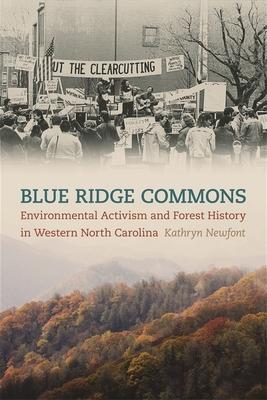In the late twentieth century, residents of the Blue Ridge mountains in western North Carolina fiercely resisted certain environmental efforts, even while launching aggressive initiatives of their own. Kathryn Newfont examines the environmental history of this region over the course of three hundred years, identifying what she calls commons environmentalism--a cultural strain of conservation in American history that has gone largely unexplored.
Efforts in the 1970s to expand federal wilderness areas in the Pisgah and Nantahala national forests generated strong opposition. For many mountain residents the idea of unspoiled wilderness seemed economically unsound, historically dishonest, and elitist. Newfont shows that local people's sense of commons environmentalism required access to the forests that they viewed as semipublic places for hunting, fishing, and working. Policies that removed large tracts from use were perceived as "enclosure" and resisted. These battles often pitted industrialists against environmentalists. Newfont argues that the side that most effectively hitched its cause to local residents' commons culture usually won. A few perceptive activists realized that the same cultural ground that yielded wilderness opposition could also produce ambitious protection efforts, such as Blue Ridge residents' opposition to petroleum exploration and clearcut timber harvesting. Incorporating deep archival work and years of interviews and conversations with Appalachian residents, Blue Ridge Commons reveals a tradition of people building robust forest protection movements on their own terms.
Book
Blue Ridge Commons: Environmental Activism and Forest History in Western North Carolina
(Write a Review)
Paperback
$41.96
In the late twentieth century, residents of the Blue Ridge mountains in western North Carolina fiercely resisted certain environmental efforts, even while launching aggressive initiatives of their own. Kathryn Newfont examines the environmental history of this region over the course of three hundred years, identifying what she calls commons environmentalism--a cultural strain of conservation in American history that has gone largely unexplored.
Efforts in the 1970s to expand federal wilderness areas in the Pisgah and Nantahala national forests generated strong opposition. For many mountain residents the idea of unspoiled wilderness seemed economically unsound, historically dishonest, and elitist. Newfont shows that local people's sense of commons environmentalism required access to the forests that they viewed as semipublic places for hunting, fishing, and working. Policies that removed large tracts from use were perceived as "enclosure" and resisted. These battles often pitted industrialists against environmentalists. Newfont argues that the side that most effectively hitched its cause to local residents' commons culture usually won. A few perceptive activists realized that the same cultural ground that yielded wilderness opposition could also produce ambitious protection efforts, such as Blue Ridge residents' opposition to petroleum exploration and clearcut timber harvesting. Incorporating deep archival work and years of interviews and conversations with Appalachian residents, Blue Ridge Commons reveals a tradition of people building robust forest protection movements on their own terms.Paperback
$41.96